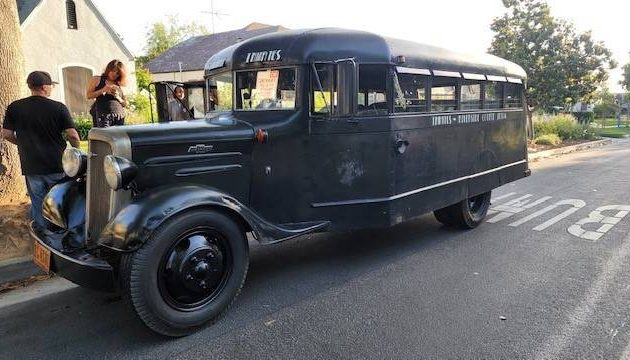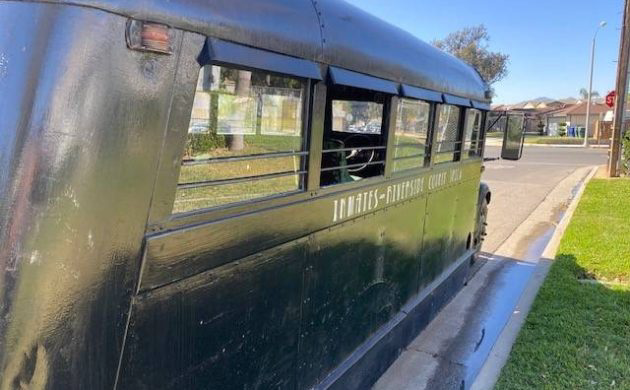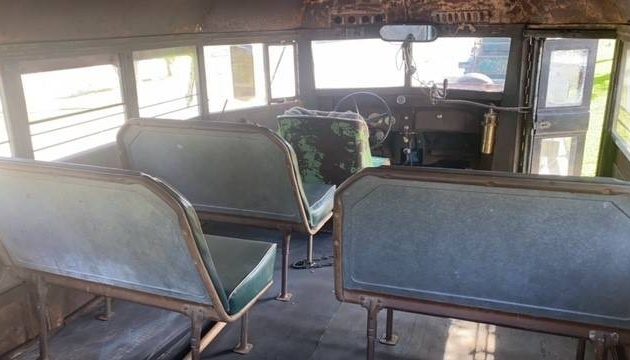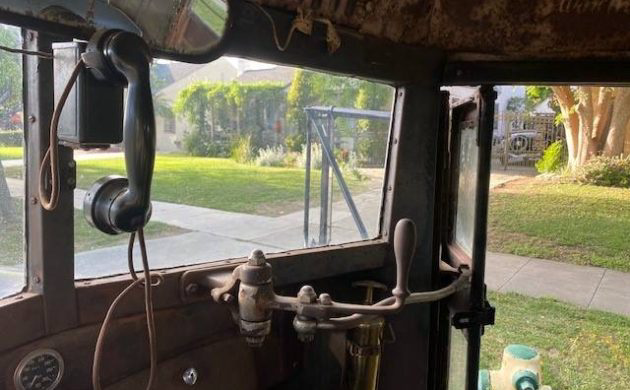One of the fun parts of writing for Barn Finds is the occasional “now for something completely different” vehicle that comes up for sale. This one got my attention because in my so-called retirement, I’ve been driving a school bus for the past couple of years. I’m no statistician, but I would think the survival rate of a bus built 88 years ago – that is still roadworthy – would be very, very low. Well, here’s one that beat the odds: a 1936 Chevrolet one-and-one-half-ton bus built by Gillig, the oldest surviving bus manufacturer in North America.
The Gillig Company’s roots can be traced back to 1890 when Jacob Gillig, a carriage builder and upholsterer, opened his own carriage shop in San Francisco, California. Over time, the company grew to become the largest manufacturer of school buses on the West Coast. This particular bus didn’t stray far from the factory and has called California home all of its life. That’s certainly a plus in the vehicle preservation column. The owner is a likable, playful chap who has posted several videos of the bus on YouTube. One is a video of him driving it with some friends in the back to a local Dairy Queen. I’d like to have a quirky buddy like that who shares my passion for antique vehicles (and DQ Blizzards).
The seller states in his ad that only 122 buses were built at the Gillig factory in 1936. I wonder how many of those are still with us. He was told that it was ordered by Warner Brothers Studio for use in a movie and ended up being used in a number of movies up until the 1960’s. Its current iteration is themed as a Riverside County Jail Bus. It’s painted black (in a video, the seller say’s its wearing the best roll-on oil-based paint you can get for $40 and that it’s been painted three times). Based on the limited photos, the bus looks solid. The seller shares that the only rust he found was at the bottom corners of the entry doors. All of the glass has been replaced and there’s new window channeling and seals (every other window can be lowered). And to keep with the current jail bus theme, the seller also added two horizontal bars to the lower window region to discourage occupant escapes.
The seller says, “The inside would take a bit more work to get pretty; it has an old crusty look” which is accurate but also gives the 88-year-old bus a bit of cool authenticity. The seller also states that he added new rubber flooring and seating, installed a hand-crank siren, and replaced the wiring which is currently 12V. All lighting and signals work, but not the gauges which are 6V. And as the seller describes, the bus even has a “hand-operated manual arm that projects two glass-beaded reflector arrows that pop out of the side of the bus’s body.” Bonus points!
The seller lists quite a bit of mechanical work that he’s performed or had done to the bus, but surprisingly, there are no photos of the engine. He states that he installed a “fresh” Chevy 250 inline six into the bus along with a new clutch and driveshaft, cleaned the fuel tank and lines, and spent $3,300 on a complete brake job. It also has a new alternator, starter, aluminum radiator, fuel pump and lines, and other new stuff the owner says he’s forgetting to list. The seller also says it starts up easily, is very strong and reliable, and is fun to drive. The bus is still residing in California (Riverside) and is for sale here on craigslist for $24,999. A special shout out to Zappenduster for sending this unique piece of history our way. Sure, there’s a niche market for antique commercial vehicles like this (okay, maybe a “niche-niche” market), but all it takes is one buyer who wants to own something historical and completely different. Could it be you? Odds are heavily in your favor that you’ll be the only 1936 Chevy Gillig bus at your local car show.







Howard-
I think that you left your lunch pail on this bus. 😉
Howard’s bus much shorter.
So clever, you know, I didn’t make it through 35 years of trucking, or 70 years of life being thinned skinned. I can take a joke, however, your insinuation that I rode a short school bus is not accurate. Short school buses were for mentally challenged( we called them retarded, a term not used anymore), and us “normies” picked on them terribly. Today, that has gone full circle, as the trolley bus, essentially a short school bus, takes seniors or handicapped to the store, so watch what you say.
Lots of people rode short wheelbase buses, likely with short rear overhangs, to allow better maneuverability in rural or rough terrain. I have seen school buses built on Dodge Power Wagon chassis. Any other implications regarding short buses are crass and the product of a sick mind.
This bus just has that look…I could see it pulling up to the pier in San Francisco circa 1936. A bunch of grizzled incorrigible hoodlums are the passengers. Well known depression era gangsters like Charles “The Claw” Merkle and Mugs Murphy. Bank robbers “Dapper” Tony Spiletto and Wiley Blaisdale are among the gents awaiting to disembark two by two onto the Bureau of Prisons ferry which will transport them across the bay to The Rock.
Yes, I agree, this cool bus definitely has “that look.” I think you could add Slug McGirk to your list of incorrigibles…
Immediately made me think of “it happened one night,” but I think that film was earlier than 1936
It is so old, the phone has a cord.
I’d just haul all the kids around with it.
Gosh, how did this one escape the typical “school bus” life of buses made from 1928 to 1940:
start out as a school bus, then—
became a Sunday School bus—
now a little wobbly sold off to farmer Gray for a berry pick’n buss. By then not much left but a couple “hippy types” saw it and bargained with farmer Gray and blessed the highway with a cloud of oily smoke. Those “hippy types” couldn’t keep it running, left it in the field where it completed it’s path back to becoming earth again.
This old Chev is the lucky one, nice old bus.
RW, Sorry that was funny!
Might’ve been another Gillig bus as the film you spoke of was made by
Frank Capra in 1934. Buses like these
were the backbone of many small bus
companies that would take you to and from the smaller towns that Greyhound didn’t service in those days. These Mom and Pop outfits were called feeder lines because
that’s what they did. More often than
not, they also carried cargo and mail
to the small towns along their routes.
And it must’ve worked out alright as
these feeder lines lasted until well into the 1960s when Greyhound and
Trailways would push the small fry
out of business by offering lower fares and lower cost per mile for cargo. What an Uber vehicle this thing would make!
Thanks, Kenneth, I didn’t know about feeder lines and how these types of buses helped serve smaller towns back in the day. Good stuff!
This would make a great RV conversion.
A stately enough old white elephant
These buses were treated a lot better than the relics I rode on. The dirt/gravel/rock roads took their toll. The stuff that the owner/drivers got away with, if tried today, they would be riding on a real prison bus.
There was a new PTL type church that swept into northern MT and parts of Canada. Some of those new recruits were convinced that they could pray away all their physical shortcomings. Well this lady driver, who saw the world through a pair of ketchup bottle bottoms at best, threw her glasses away and, while telling the world that her vision was 20/20 would furtively wait at the corner with a bus full of kids until someone drove by so she could follow them to town.
Well, it was a rather overcast day with snow flurries. Our “leading lady” saw the opportunity and zoomed in behind a loaded grain truck. They got within half a mile of town and she began to relax. Too soon because the truck had to make a quick stop. The bus piled into the back of the truck and the cat was out of the bag…
The feeder lines I spoke of were in the
hills of Kentucky and Tennessee and in the Western states like Montana, Utah, Wyoming, and the Dakotas. As
I said, you would go to the local diner
and wait for the bus there. At least in
Kentucky, the diner doubled as the bus station so you more than likely paid for your ticket along with your
meal if any. And since they were only
going as far as the nearest city that
had a bus station, fares were usually
cheap and one price fit all. And of
course, the town Postmaster would
drop by for a bite to eat and brought
the outgoing mail with them and then
collected the inbound mail from the driver along with any cargo that may
have been delivered to many small
towns, the Postmaster was also the
closest thing to being UPS, so you picked your cargo up at the post office and we’re charged accordingly.
And most of the buses they used were surplus school buses with large
luggage racks on their rooves to carry
the riders suitcases and the aforementioned cargo. I saw this in
’68, when we visited my uncle that lived outside of Morgantown, Kentucky. Dad told me that this was how they got people and cargo from
place to place. The bus I saw was an
old ’51 or ’52 Chevy with a Passenger body. Seemed it worked
out fine for them too. It’s a crying shame that Greyhound and Trailways
moved in and Effed everything up.
Great story!!! Thanks for bringing it! I read this listing a day or two ago and went back to it, just to see more comments. (Well ok, and to show the wife why I thought we needed the bus) But wow, such good stuff here. Thank you for the visual you’ve created here